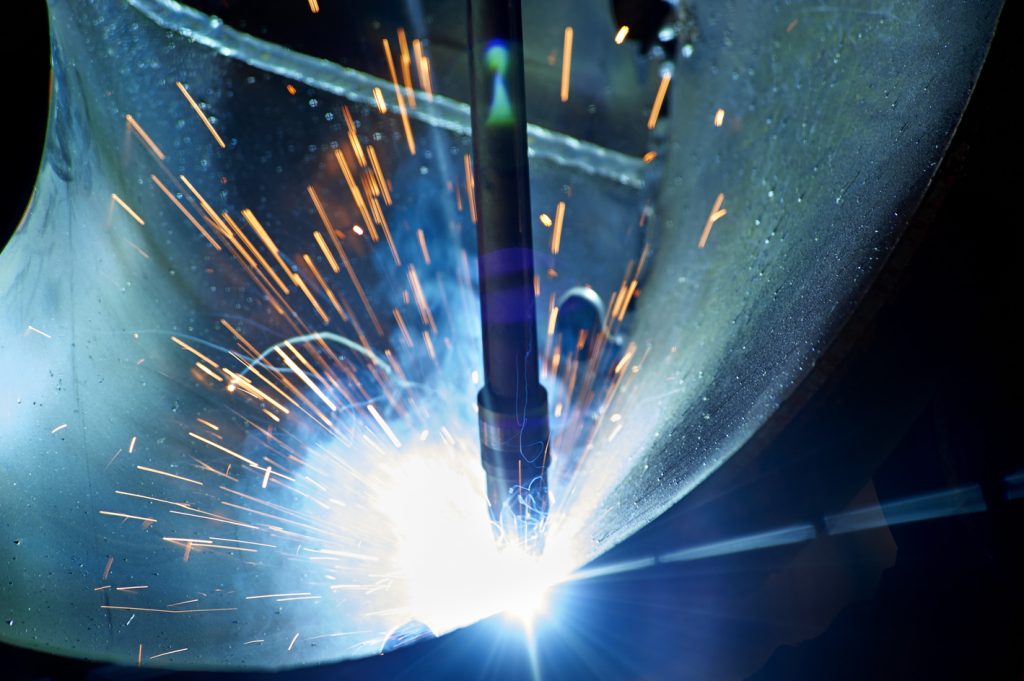Checking Out the Relevance of Welding Evaluation in Industrial Applications: Guarding Against Failures and Enhancing Long Life
Welding evaluation functions as a crucial line of protection in commercial applications, guaranteeing the architectural honesty and reliability of welded elements. By methodically identifying flaws such as porosity and insufficient fusion, evaluations not only stop failings but likewise prolong the life-span of essential assets. Complying with industry requirements improves both safety and security and operational efficiency; however, the ramifications of neglecting these practices can be severe. As we analyze the diverse benefits of routine examinations, it becomes evident that understanding these dynamics is not simply a matter of compliance yet a strategic imperative for long life and danger mitigation (Welding Inspection Gilbert Arizona).
Duty of Welding Inspection
Welding inspection offers as an essential protect in commercial applications, making sure that bonded frameworks satisfy defined standards of quality and safety. This procedure includes a systematic exam of welds to confirm their stability, stamina, and conformity with well established codes and specs. The role of welding examination is diverse, encompassing both aesthetic evaluations and non-destructive screening techniques, which may include ultrasonic, radiographic, or magnetic fragment screening.

Additionally, welding examination plays an important function in regulative compliance. Inevitably, the function of welding assessment is important in advertising safety, improving performance, and securing financial investments in industrial facilities.
Common Welding Issues

One of the most prevalent defects is porosity, characterized by little gas pockets caught within the weld metal. This happens because of pollutants or improper shielding gas, endangering the weld's strength. An additional substantial defect is insufficient fusion, where the weld metal falls short to bond effectively with the base product, possibly resulting in architectural weak points.
Splits can likewise develop during or after the welding process, commonly credited to thermal anxieties or incorrect cooling prices. Furthermore, undercutting, where the base steel is deteriorated along the weld bead, can weaken the joint and is commonly caused by too much warmth input or incorrect strategy.
Moreover, absence of penetration happens when the weld metal does not get to the root of the joint, leading to insufficient strength. Recognizing these common issues is important for examiners and welders alike to ensure that bonded frameworks meet safety and security and efficiency standards, eventually preventing prospective failings in industrial applications.
Benefits of Normal Evaluations
Normal inspections work as a crucial secure in ensuring the reliability and durability of bonded structures. These assessments recognize possible defects and weaknesses that might compromise the integrity of welds, permitting prompt remediation before problems rise. By implementing an organized examination regimen, organizations can considerably minimize the danger of catastrophic failings that might bring about pricey downtime, equipment important link replacement, and even accidents.
Additionally, normal inspections contribute to enhanced quality control throughout the welding process. By adhering to a consistent inspection schedule, business can guarantee that their welding methods satisfy well established top quality benchmarks and finest methods. This not only fosters a culture of accountability but also motivates constant renovation amongst welding employees.
In enhancement, normal examinations promote better maintenance preparation. By identifying wear and tear early, organizations can strategically schedule repairs and substitutes, minimizing disruption to procedures. This proactive technique ultimately brings about prolonged property life expectancy and improved total efficiency.
Last but not least, a dedication to regular examinations can boost a business's credibility in the sector. Stakeholders and clients progressively value organizations that prioritize Check This Out safety and security and high quality, thereby improving trust and potentially leading to raised company opportunities.
Industry Standards and Laws
Following industry requirements and guidelines is a basic aspect of welding assessment that complements the benefits of routine analyses. These standards, developed by organizations such as the American Welding Society (AWS) and the American Culture of Mechanical Designers (ASME), provide a framework for finest techniques in welding procedures, materials, and examination techniques. Compliance with these policies makes sure that welds fulfill the required quality and security standards, considerably reducing the risk of structural failures.
Regulative bodies like the Occupational Safety And Security and Health And Wellness Management (OSHA) additionally apply standards that protect workers and the environment throughout welding procedures. By adhering to these developed criteria, sectors can boost the integrity of their frameworks and parts, guaranteeing they execute as planned under numerous functional problems.
Additionally, adherence to sector standards fosters uniformity in quality assurance, helping with smoother interaction amongst stakeholders and governing companies. This positioning not only minimizes liability threats however additionally boosts the integrity of organizations in affordable markets. Inevitably, conformity with welding requirements and laws is have a peek here not just a lawful responsibility; it is an important investment in safety and security, performance, and long-term functional success.
Future Trends in Welding Evaluation
As sectors continue to advance, the future of welding assessment is poised to incorporate advanced technologies that boost accuracy and performance. One of the most considerable trends is the fostering of automation and robotics in assessment processes. Automated systems can perform assessments rapidly, reducing human mistake and increasing throughput in producing environments.
Moreover, the combination of expert system (AI) and artificial intelligence algorithms will certainly make it possible for predictive analytics, permitting for real-time assessments and aggressive maintenance (Welding Inspection Gilbert Arizona). By assessing data from previous assessments, these technologies can recognize patterns that might show potential failures, therefore extending the life expectancy of bonded components

Moreover, the fad towards digitalization will cause boosted information monitoring systems that facilitate much better monitoring, reporting, and conformity with sector standards. In summary, the future of welding evaluation is defined by technical improvements that assure to considerably improve dependability, security, and operational effectiveness in different commercial applications.
Final Thought
To conclude, welding inspection offers a vital function in ensuring the integrity and toughness of bonded structures across numerous industrial applications. By recognizing issues such as porosity and insufficient combination, regular examinations play a significant duty in danger mitigation and quality control. Adherence to industry requirements and laws better enhances functional security and integrity. As advancements in technology proceed to advance, the future of welding assessment assures increased accuracy and efficiency, eventually adding to the long life of vital infrastructures.
Welding inspection offers as a vital line of protection in industrial applications, making certain the structural stability and reliability of welded components.Welding assessment serves as an important safeguard in commercial applications, ensuring that welded frameworks meet specified criteria of quality and security - Welding Inspection Gilbert Arizona. Inevitably, the role of welding assessment is indispensable in promoting security, enhancing performance, and shielding investments in industrial facilities
These criteria, developed by organizations such as the American Welding Society (AWS) and the American Culture of Mechanical Engineers (ASME), offer a framework for finest techniques in welding processes, materials, and evaluation methods.In verdict, welding inspection serves a crucial feature in ensuring the integrity and toughness of bonded frameworks across different commercial applications.